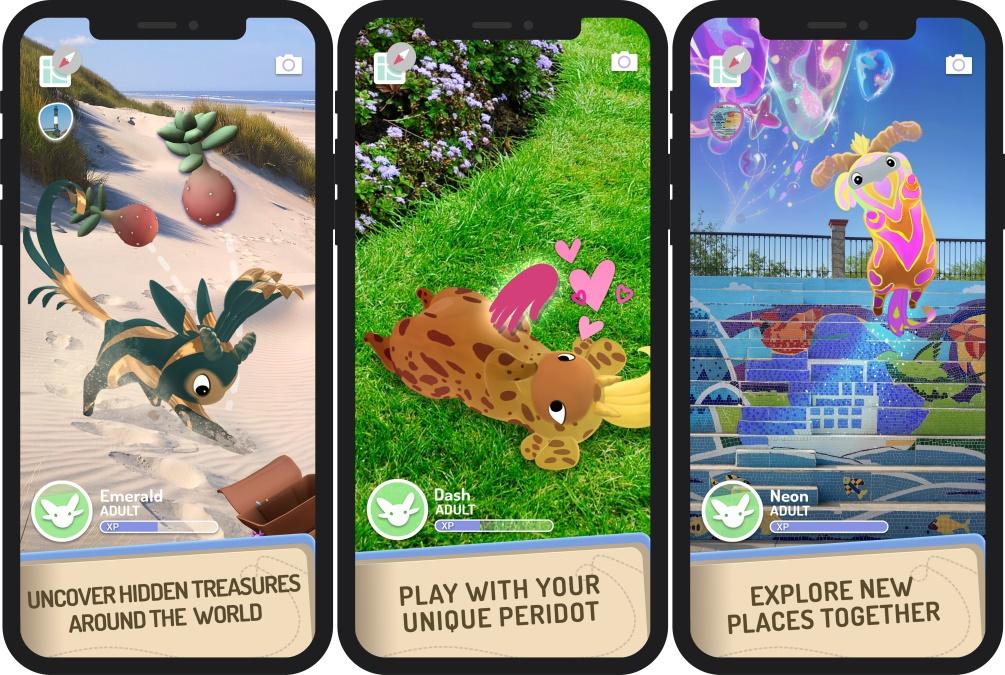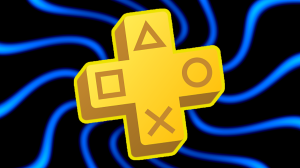Pokemon Go developer Niantic is poised to launch its latest video game, Peridot, in the near future, and it’s both a significant departure for the company while also an obvious expansion of what it’s done with titles like Ingress and Pokemon Go in the past. It’s a completely new IP that delves even further into the augmented-reality (AR) elements of its past video games to become a full-on Tamagotchi-like experience on mobile devices.
Videos by ComicBook.com
While at a media-only event part of Summer Game Fest this past weekend, I had the opportunity to catch up with Niantic and see an in-development build of Peridot live and in person. Peridot Senior Producer Ziah Fogel walked me through starting a new account to begin raising my own Peridot – or Dot for sure – which I immediately named Goober and gave a pet.

Contrary to, say, Pokemon Go, AR is an absolutely integral part of Peridot. One of the first things the game requested me to do was find a flat surface in the real world in order to summon Goober to then play with him. The creatures in the video game are similar somewhat to snoutless, wildly colored Dachshunds, and Goober was absolutely a fine example of one. They also have fairly expressive eyes and different archetypes associated with them like Metallic or Jester and so on.
Playing Peridot is essentially all about taking your, well, Peridot out into the world and playing with them, nurturing them, and raising successive generations of Dots through breeding them once they reach adulthood. The goal seems to broadly be trying to raise rarer and rarer archetypes of Dots. If you’ve ever had a digital pet in a small device on a keychain or similar, Peridot should be immediately familiar in a lot of ways while much more expansive.

As with other games where you’re raising a digital pet, Dots have specific wants in order to grow, and Niantic says there’s a whole desire system in Peridot based around this. According to the initial announcement, the idea here is to drive people to explore, exercise, and engage in real-world interactions. So, for example, your Dot could want you to go for a walk, visit a specific point of interest that’s near, or eat something specific. While at the event, for example, Goober first wanted a sandwich, which wasn’t too difficult to accomplish and didn’t require me to go anywhere exactly, but still.
Pokemon Go, as mentioned above, has its own uses of AR, but those feel almost rudimentary compared to Peridot. “We use all the newest, fanciest AR technology,” Fogel told me. While the exact specifics of the technology in my hand weren’t explained, my time with it showcased just how much further Niantic was trying to push its Lightship ARDK technology. In fact, it’s such an important aspect of the game that Peridot won’t be able to be played without using AR – at least for now, according to Fogel.
For example, the AR tech recognizes different types of surfaces. Depending on the type of surface, “foraging” with the Dot will turn up different kinds of food. It can recognize dirt, grass, water, foliage, and sand as well as what Fogel broadly referred to as “unnatural or manmade grounds.” Foraging on water might turn up kelp or prickly beets in the sand while the aforementioned unnatural surfaces always turn up sandwiches. Considering Goober wanted a sandwich and I was at an open-air event on a restaurant’s patio, finding a sandwich to grant his desire was relatively easy.
What was less clear was how exactly social interactions would go. The breeding of Dots requires certain “Habitats” – basically, points of interest – where wild Dots can be found to breed using “Nests,” items that can be foraged for at Habitats that mutate features like the pattern on the resulting Dots and more based on rarity and the like. While monetization does not seem to be totally nailed down quite yet, buying Nests seems like the natural conclusion to the game’s current design, and Fogel confirmed there will definitely be in-app purchases.

Whether all of these elements come together for a cohesive whole when Peridot launches is hard to say. The in-development build I played was intriguing enough, and I’m a sucker for anything resembling a Tamagotchi, but exactly how it gets monetized will make all the difference. The ways in which a mobile game tries to extract cash from you can take an otherwise fantastic experience and turn it into something dreadful. For now, Peridot seems colorful, charming, and full of possibility.
Peridot is currently in a soft launch beta testing in select markets. A definitive, full release date has not yet been announced.








